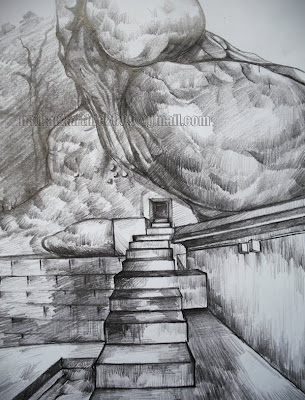PALAMARAM ASHRAM AND CAVE ON ARUANCHALA
Exploring Arunachala, Carol and I came across another cave, one under a rock that has a shrine and ashram built around it. We were told by the Arunachala Mountain Guide, Saran, who grew up near this spot, that this is called Palamaram Ashram and is ‘generations’ old and has been run by one family for these generations. Palamaram is the Tamil word for ‘jackfruit’ (but we did not see a jackfruit tree). The guru who was most recently active here, per Saran, was Palamaram Swamy, who was here for 40 years and for the last 15 years has been in the Himalayas. He said the Ashram is presently handled by Srinivasam.
[D'movies] The Little Traitor HD quality
6 years ago




















